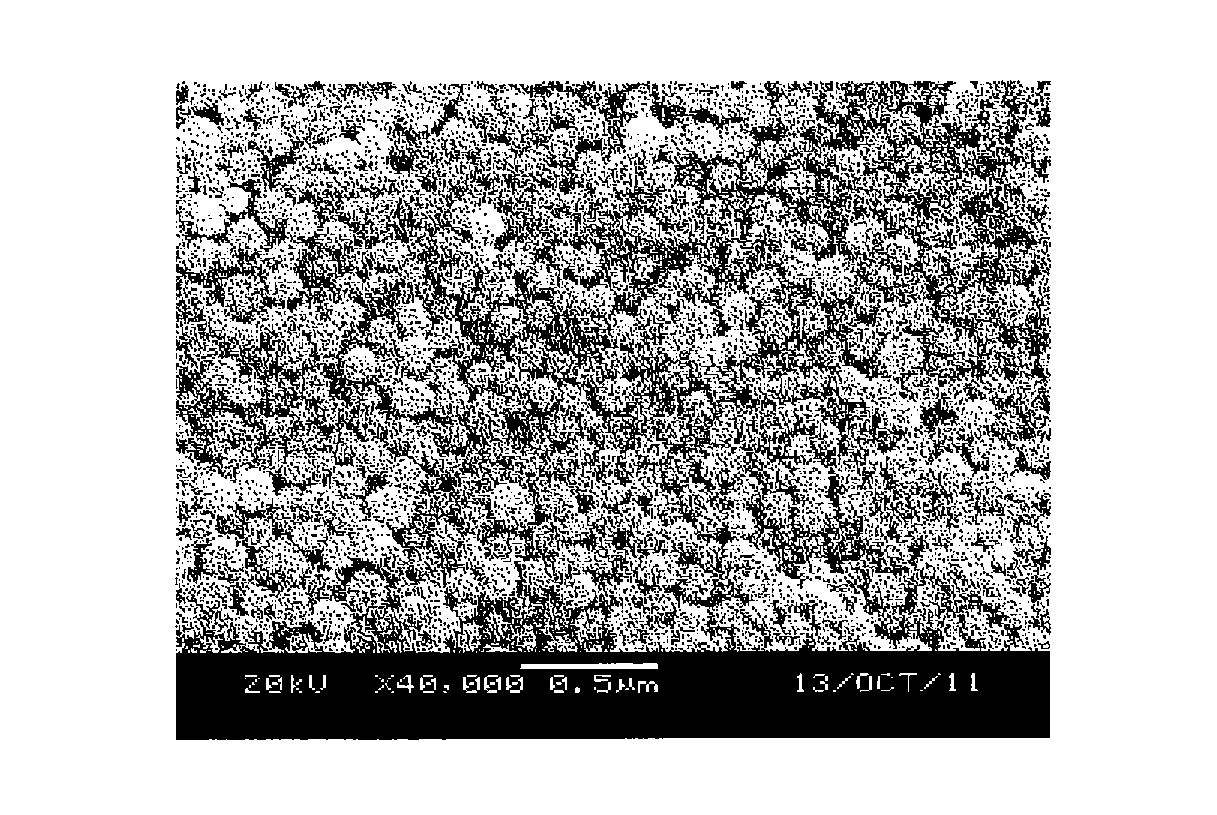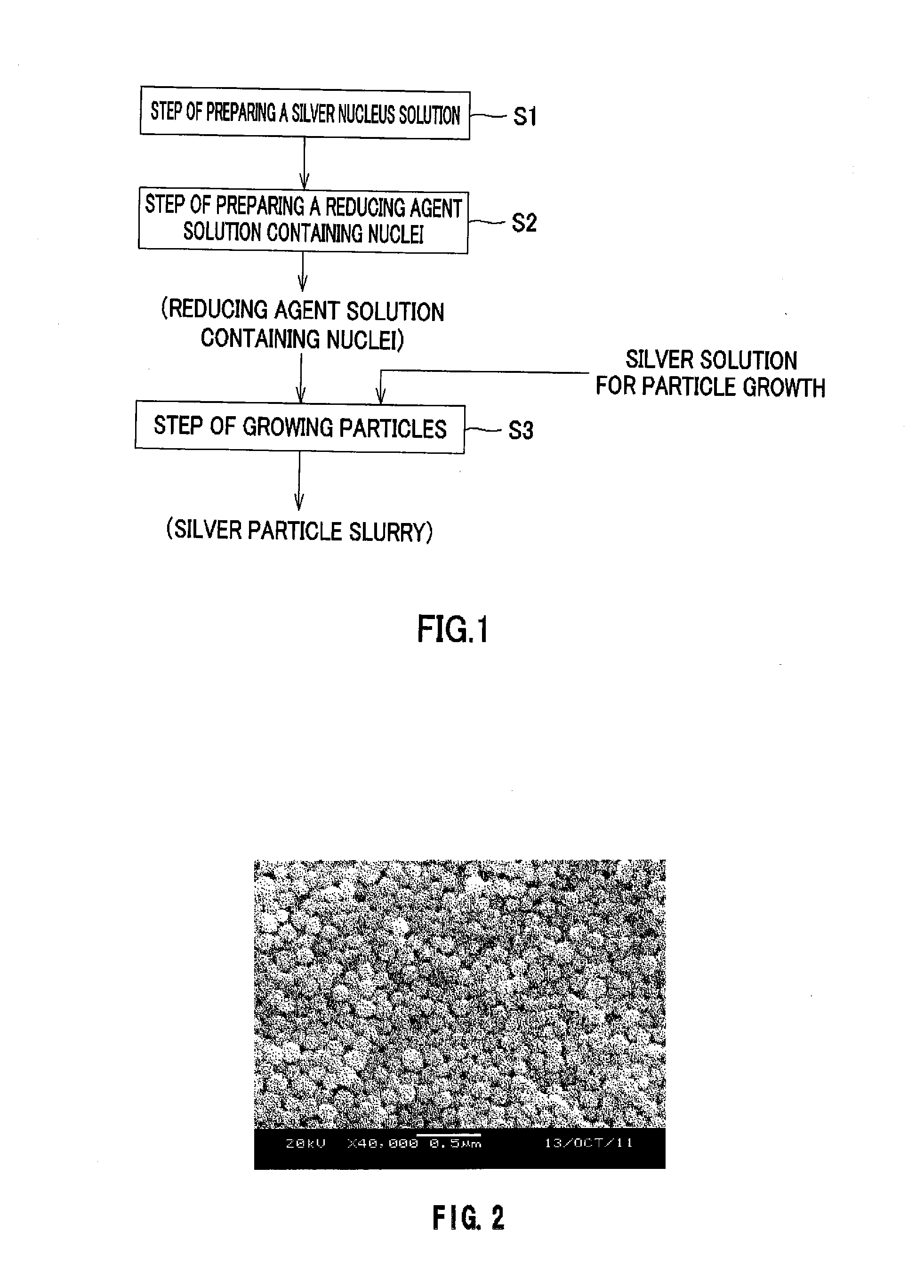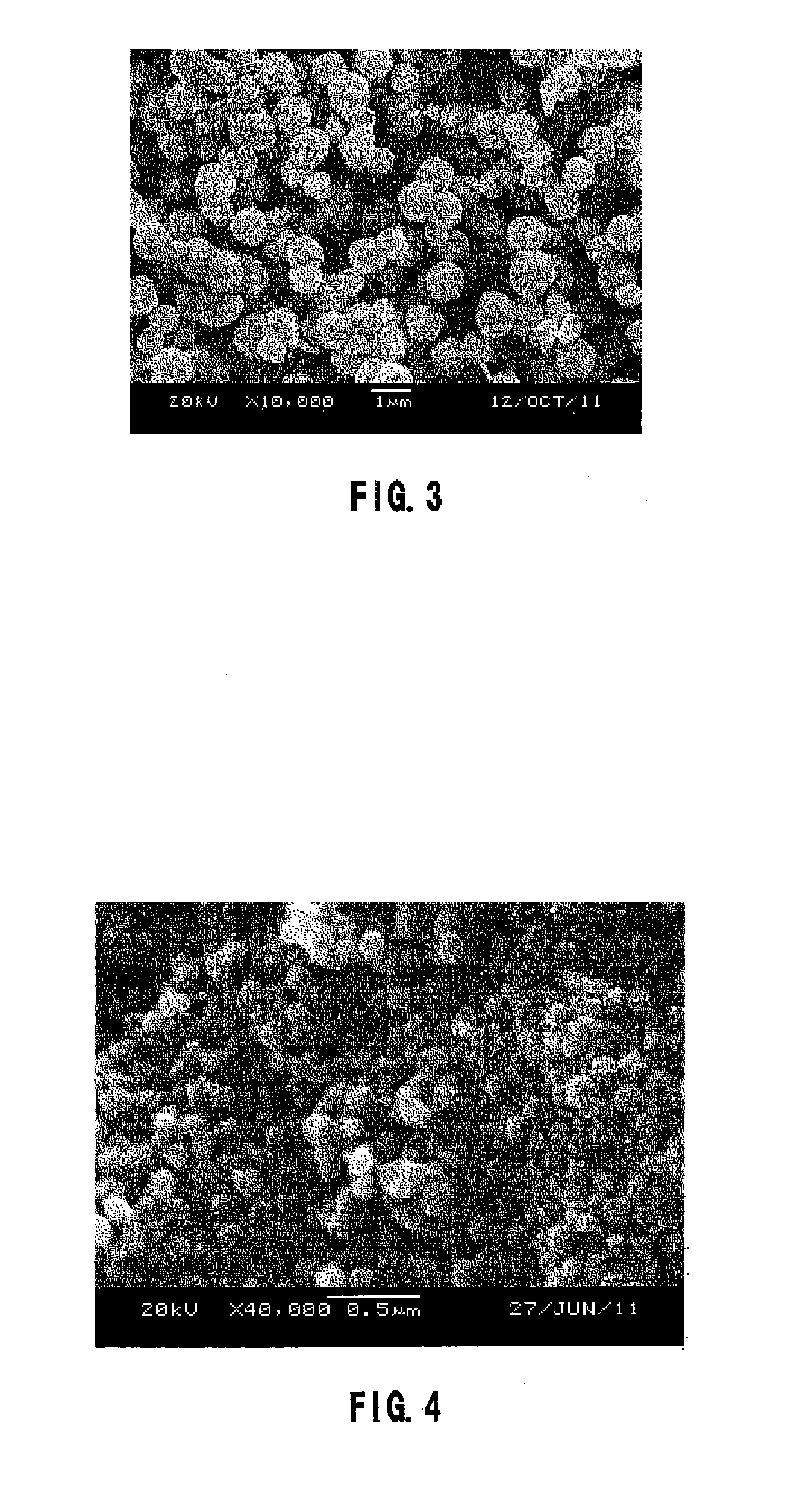Silver powder and method for producing same
- Summary
- Abstract
- Description
- Claims
- Application Information
AI Technical Summary
Benefits of technology
Problems solved by technology
Method used
Image
Examples
example 1
[0086]2.88 g of silver chloride (manufactured by Sumitomo Metal Mining Co., Ltd.) was fed into a mixture of 66 mL of 25% by mass ammonia water and 1.22 L of pure water maintained at a liquid temperature of 36° C. in a warm bath at 38° C. while being stirred to prepare a silver solution for nucleation (the silver concentration in the solution was 1.8 g / L, and the molar ratio of ammonia to the amount of silver was 44). Subsequently, 43 g of a dispersant, polyvinyl alcohol (manufactured by KURARAY CO., LTD., PVA205) was dissolved in 7.33 L of pure water at 36° C. To this, 0.91 mL (3.6 equivalents with respect to the amount of silver in the silver solution for nucleation) of a strong reductant, hydrazine monohydrate was added to thereby obtain a reductant solution, which was maintained at 36° C. in a warm bath. Then, to the reductant solution, the silver solution for nucleation was added at a flow rate of 64 mL / minute to form silver nuclei to thereby obtain a silver nucleus solution.
[00...
example 2
[0092]1.11 g of silver chloride (manufactured by Sumitomo Metal Mining Co., Ltd.) was fed into a mixture of 25 mL of 25% by mass of ammonia water and 0.485 L of pure water maintained at a liquid temperature of 36° C. in a warm bath at 38° C. while being stirred to prepare a silver solution for nucleation (the silver concentration in the solution was 1.5 g / L, and the molar ratio of ammonia to the amount of silver was 44). Subsequently, 31 g of a dispersant, polyvinyl alcohol (manufactured by KURARAY CO., LTD., PVA205) was dissolved in 1.0 L of pure water at 36° C. To this, 0.12 mL (1.2 equivalents with respect to the amount of silver in the silver solution for nucleation) of a strong reductant, hydrazine monohydrate was added to thereby obtain a reductant solution, which was maintained at 36° C. in a warm bath. Then, to the reductant solution, the silver solution for nucleation was added at a flow rate of 20 mL / minute to form silver nuclei to thereby provide a silver nucleus solution...
example 3
[0098]Silver powder was obtained and evaluated as in Example 2, except that 2.21 g of silver chloride used for the silver solution for nucleation, 50 mL of 25% ammonia water (the silver concentration in the solution was 3.0 g / L, and the molar ratio of ammonia to the amount of silver was 44), and 0.23 mL of a strong reductant, hydrazine monohydrate used for the reductant solution for silver nucleation (1.2 equivalents with respect to the amount of silver in the silver solution for nucleation) were added.
[0099]When observed with an SEM, both the silver nuclei and silver powder obtained were composed of homogeneous particles. Additionally, the average particle diameter of the silver nuclei and silver powder measured with SEM observation were each 0.14 μm and 0.42 μm. The relative standard deviation (standard deviation a / average particle diameter d) of the particle diameter of the silver powder obtained from the measurement result was 0.25, confirming that the powder was homogeneous and...
PUM
| Property | Measurement | Unit |
|---|---|---|
| Percent by mass | aaaaa | aaaaa |
| Concentration | aaaaa | aaaaa |
| Concentration | aaaaa | aaaaa |
Abstract
Description
Claims
Application Information
 Login to View More
Login to View More - R&D
- Intellectual Property
- Life Sciences
- Materials
- Tech Scout
- Unparalleled Data Quality
- Higher Quality Content
- 60% Fewer Hallucinations
Browse by: Latest US Patents, China's latest patents, Technical Efficacy Thesaurus, Application Domain, Technology Topic, Popular Technical Reports.
© 2025 PatSnap. All rights reserved.Legal|Privacy policy|Modern Slavery Act Transparency Statement|Sitemap|About US| Contact US: help@patsnap.com



